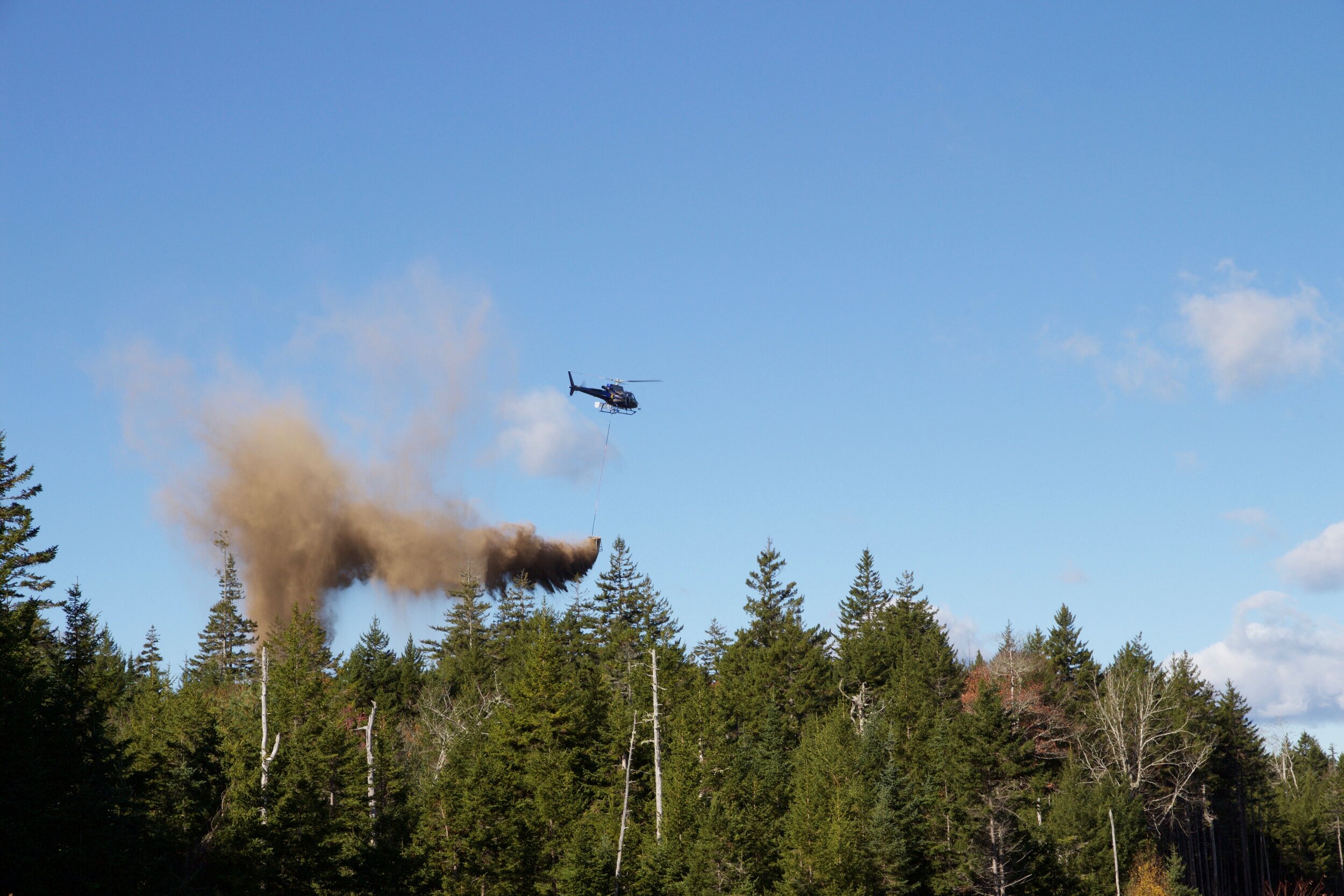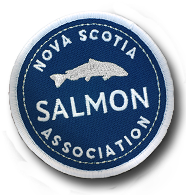
Acid Rain Mitigation
Collaboration and evidence-based decision making
In 2001 the Nova Scotia Salmon Association partnered with both provincial and federal governments, industry partners and the Atlantic Salmon Federation to form the Acid Rain Mitigation Committee. This committee focused on creating a recovery plan for the Southern Uplands region after significant and continued damage caused by acid rain. The negative effects of acid rain on local fish species had been well-documented. We needed an approach supported by scientific research that could provide a long-term solution. With help from the Norwegian Institute for Water Research (NIVA), a study was done to help determine a way forward for acid-damaged rivers in Nova Scotia.
Limestone In-Stream
A summary report was completed at the end of 2001, guided by our collaboration with NIVA and members of the Acid Rain Mitigation Committee. This report provided a detailed strategy for Nova Scotia to improve the water quality of fish habitat using aquatic, in-stream liming. Building on techniques used in Norway and Sweden, this study was the catalyst for the West River, Sheet Harbour Acid Mitigation Project.
Four years later, and with the combined efforts of contractors, volunteers and board members, the West River lime doser was installed. It continues to supply powdered, agricultural limestone to the river, which has seen improvements in overall water quality. Dedicated staff, volunteers and students have been helping monitor the effects of in-stream lime dosing and its positive results on Atlantic salmon populations.
Photo by Robert Moser
A second lime doser was installed on the Killag River in 2016. Supplying limestone to remote areas using wind and solar energy, the Killag lime doser has increased our treatment area of the West River, Sheet Harbour by a further 30km.
Limestone by Air
Catchment liming is another method currently used to reduce the effects of acid rain. Implemented in 2016 on the West River, this method of spreading limestone by air has been successfully used in Scandinavia for decades.
Through our partnership with the Nova Scotia Department of Lands and Forestry, we have successfully spread powdered limestone across 255ha of the West River watershed. This treatment method is effective for both acid-damaged plants AND freshwater habitat. There have been improvements in soil chemistry and vegetation, which is important for the ecosystem supporting wild salmon, trout and other aquatic organisms.
Re-building our rivers
The chemical structure of a river is not the only factor impacting sensitive fish species. Physical characteristics play an important role in a salmon’s life as well, particularly during egg and mature adult life stages. Eggs require a gravel size that both protects them and keeps them oxygenated with flowing water prior to hatching. Adults require cold water refuge in the form of deep, slow-moving pools during the heatwaves of summer. Both requirements can be met by improving the physical structure of riverbeds, particularly in areas that became wide and shallow due to historical logging harvests.
Working with volunteers and contractors, the Nova Scotia Salmon Association has built physical structures along 7km of the West River. These structures help narrow the river in places, creating deeper pools and sweeping meanders – the perfect habitat for a warm salmon to find cooler temperatures.
Keeping an eye on fish
NSSA volunteers and staff have logged many long hours restoring habitat and combatting acid rain on the West River, Sheet Harbour. This hard work has not been in vain. Throughout the process we have also been monitoring Atlantic salmon populations to track the effects of these efforts. Using several different techniques, we have been able to gauge the response salmon have had. So far, the work has been paying off.
We have been operating a rotary screw trap on the West River, Sheet Harbour since 2008. Sometimes called ‘smolt wheels’, these traps sit facing upstream in the river and funnel a portion of the migrating fish into live holding tanks. Submerged holding tanks are a safe place for fish to be counted, measured and sampled from, before being released back into the river. This process allows us to estimate the number of Atlantic salmon smolt migrating downstream from the West River on their first journey to the sea. Our team operates one smolt wheel from April to May each year.





